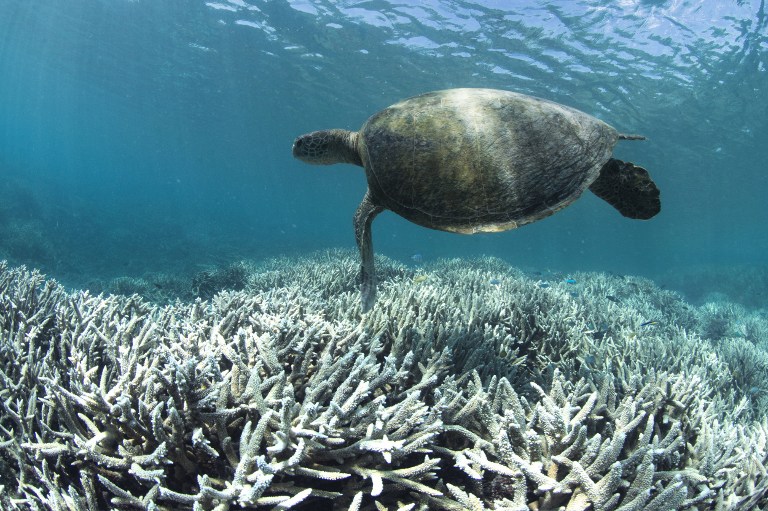
SYDNEY, Australia (AFP) — Australia’s Great Barrier Reef is suffering its worst coral bleaching in recorded history with 93 percent of the World Heritage site affected, scientists said Wednesday as they revealed the phenomenon is also hitting the other side of the country.
After extensive aerial and underwater surveys, researchers at James Cook University said only seven percent of the site had escaped the whitening triggered by warmer water temperatures.
“We’ve never seen anything like this scale of bleaching before,” said Terry Hughes, convenor of the National Coral Bleaching Taskforce.
The damage ranges from minor in the southern areas — which are expected to soon recover — to very severe in the northern and most pristine reaches of the site which stretches along 2,300 kilometres of the east coast.
Hughes said of the 911 individual reefs surveyed, only 68 (or 7 percent) had escaped the massive bleaching event which has also spread south to Sydney and across the country to Western Australia.
Researcher Verena Schoepf, from the University of Western Australia, said coral was already dying at a site she had recently visited off the western state’s north coast.
“Some of the sites that I work at had really very severe bleaching, up to 80 to 90 percent of the coral bleached,” she told AFP. “So it’s pretty bad out there.”
While Western Australia’s Ningaloo Marine Park appeared to have escaped damage, areas north of Broome were suffering, she said, just one day after scientists revealed coral bleaching had been detected in Sydney Harbour for the first time.
Bleaching occurs when abnormal environmental conditions, such as warmer sea temperatures, cause corals to expel tiny photosynthetic algae, draining them of their colour.
Corals can recover if the water temperature drops and the algae are able to recolonise them, but scientists warned last year that the warming effects of the El Nino weather pattern could result in a mass global bleaching event.
Andrew Baird, from James Cook University’s centre for coral reef studies, said the bleaching was a sign of a global problem.
“It’s much bigger than just Australia,” he said, adding that there were reports of bleaching throughout Indonesia and indications it was beginning in the Maldives.
But he said he had been surprised by the scale and severity of the event on the Great Barrier Reef, a major tourist drawcard which is teeming with marine life.
“We’ve been expecting a really big event for a while I suppose and here it is,” he told AFP.
Baird said because the bleaching was far less serious in the southern reaches “lots of the reef will still be in good shape”.
“But the reef that’s been badly affected — which is a third to a half of it — is going to take a while to recover,” he told AFP.
“And again the big question is how many of these events can it handle? And I think the answer is not many more.”
mfc/bp/kb
© 1994-2016 Agence France-Presse







